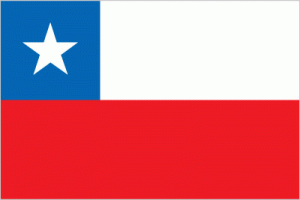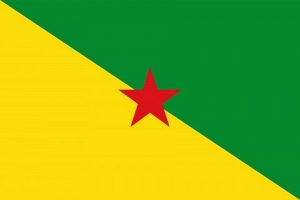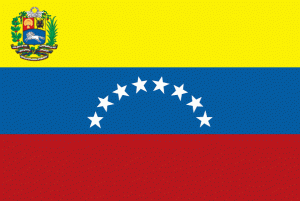List of Countries in South America
How many countries in South America?
As of 2024, there are 12 countries in South America: Argentina, Bolivia, Brazil, Chile, Colombia, Ecuador, Guyana, Paraguay, Peru, Suriname, Uruguay and Venezuela. French Guiana is an overseas territory of France and not an independent country. In this American subcontinent where the predominant language is Spanish, Portuguese is only spoken in Brazil. This country is the most populous with approximately 210 million residents. Brazil is followed by Argentina, with population of approximate 41 million.
With 12 nations, the South America has a population of 422.5 million in total, accounting for 5.8% of the world’s population. The residents in South America are made up of Indians, Whites and people of mixed race. The continent has a land area of 17,850,000 square kilometers, accounting for about 12% of the world’s land area. As mentioned above, Spanish is the most spoken language and residents are primarily Christian.
South America tourism becomes more and more populous. Top destinations include Amazonia (Ecuador), Machu Picchu (Peru), Angel Falls (Venezuela), Torres del Paine (Chile), and Salar de Uyuni (Bolivia).
Alphabetical List of South American Countries
As of 2020, there are a total of twelve countries in South America. See the following table for full list of Southern American countries in alphabetical order:
| # | Flag | Country | Official Name | Independence Date | Population |
| 1 |  |
Argentina | Argentine Republic | July 9, 1816 | 45,195,785 |
| 2 |  |
Bolivia | Plurinational State of Bolivia | August 6, 1825 | 11,673,032 |
| 3 |  |
Brazil | Federative Republic of Brazil | September 7, 1822 | 212,559,428 |
| 4 |  |
Chile | Republic of Chile | February 12, 1818 | 19,116,212 |
| 5 |  |
Colombia | Republic of Colombia | July 20, 1810 | 50,882,902 |
| 6 |  |
Ecuador | Republic of Ecuador | May 24, 1822 | 17,643,065 |
| 7 |  |
Guyana | Republic of Guyana | May 26, 1966 | 786,563 |
| 8 |  |
Paraguay | Republic of Paraguay | May 15, 1811 | 7,132,549 |
| 9 |  |
Peru | Republic of Peru | July 28, 1821 | 32,971,865 |
| 10 |  |
Suriname | Republic of Suriname | November 25, 1975 | 586,643 |
| 11 |  |
Uruguay | Eastern Republic of Uruguay | August 25, 1825 | 3,473,741 |
| 12 |  |
Venezuela | Bolivarian Republic of Venezuela | July 5, 1811 | 28,435,951 |
Location Map of South America
Countries bordering Atlantic and Pacific Ocean
South America is bordered by the Atlantic Ocean and the Pacific Ocean. The countries bordering the Atlantic Ocean are: Brazil, Uruguay, Argentina, Venezuela, Guyana, Suriname and French Guiana. And, the countries bordering the Pacific Ocean are: Chile, Peru, Ecuador and Colombia. Bolivia and Paraguay are the only countries that are not bathed by any ocean.
Country Facts and State Flags
Here are brief data and national flags of all South American countries:
1. Argentina
 |
|
2. Bolivia
 |
|
3. Brazil
 |
|
4. Chile
 |
|
5. Colombia
 |
|
6. Ecuador
 |
|
7. Guiana
 |
|
8. Paraguay
 |
|
9. Peru
 |
|
10. Suriname
 |
|
11. Uruguay
 |
|
12. Venezuela
 |
|
Brief History of South America
Pre-Columbian Civilizations
South America was home to numerous advanced and diverse civilizations long before the arrival of Europeans. Among the most notable were the Inca Empire, which dominated the western part of the continent. The Incas, known for their sophisticated road systems, agricultural terraces, and architectural marvels like Machu Picchu, ruled from the early 15th century until the Spanish conquest. Other significant pre-Columbian cultures included the Muisca in present-day Colombia, known for their goldwork, and the Tiahuanaco culture around Lake Titicaca.
The Spanish and Portuguese Conquests
In the early 16th century, Spanish explorers like Francisco Pizarro and Portuguese explorers led by Pedro Álvares Cabral began the conquest of South America. Pizarro famously overthrew the Inca Empire in 1533, establishing Spanish control over much of the western part of the continent. Meanwhile, Portuguese influence was established in the eastern region, particularly Brazil, following Cabral’s landing in 1500. This period marked the beginning of extensive European colonization, which brought profound changes to the continent’s demographics, economy, and culture.
Colonial Period
During the colonial period, South America was divided into Spanish and Portuguese territories. Spanish America was governed by the Viceroyalties of New Granada, Peru, and Río de la Plata, while Brazil remained a unified Portuguese colony. The colonial economy was primarily based on mining, particularly silver in places like Potosí, and agriculture. The introduction of African slaves provided the labor force necessary for these industries. This period also saw the blending of Indigenous, African, and European cultures, giving rise to the unique cultural tapestry of modern South America.
Independence Movements
The late 18th and early 19th centuries were a time of revolutionary fervor in South America, inspired by the American and French revolutions. Leaders like Simón Bolívar and José de San Martín spearheaded movements across the continent. Bolívar, known as “El Libertador,” played a crucial role in the independence of Venezuela, Colombia, Ecuador, Peru, and Bolivia. San Martín was instrumental in liberating Argentina, Chile, and Peru. By the mid-1820s, most of South America had gained independence from European colonial powers, leading to the formation of numerous sovereign nations.
Post-Independence Struggles
The post-independence period in South America was marked by significant political instability. Newly formed nations grappled with issues such as territorial disputes, economic dependency, and the challenge of building cohesive national identities. Frequent conflicts, both internal and between neighboring countries, characterized this era. Prominent examples include the War of the Triple Alliance (1864-1870) involving Paraguay against Brazil, Argentina, and Uruguay, and the War of the Pacific (1879-1884) between Chile, Bolivia, and Peru.
Economic and Social Developments
The late 19th and early 20th centuries saw South America undergo significant economic and social transformations. The export-oriented economy expanded, with commodities like coffee, rubber, beef, and minerals driving growth. However, this also led to economic dependency on global markets. Socially, the period saw increased immigration from Europe, particularly to Argentina and Brazil, contributing to the cultural diversity of the region. Industrialization began to take root, especially in countries like Argentina and Brazil, laying the groundwork for future economic development.
20th Century Turmoil and Reform
The 20th century in South America was a period of intense political and social upheaval. Many countries experienced periods of military dictatorship, driven by Cold War dynamics and internal strife. Notable examples include the military juntas in Brazil (1964-1985), Argentina (1976-1983), and Chile under Augusto Pinochet (1973-1990). Despite the repression and human rights abuses, these periods also spurred movements for democracy and social reform. The latter part of the century saw a wave of democratization, with countries transitioning back to civilian rule.
Contemporary South America
In recent decades, South America has made significant strides in economic development, social progress, and political stability. Countries like Brazil, Argentina, and Chile have emerged as regional powers with diverse economies. The region has also seen efforts toward greater integration, exemplified by organizations like Mercosur and the Union of South American Nations (UNASUR). However, challenges remain, including economic inequality, political corruption, and social unrest. Environmental issues, particularly deforestation in the Amazon, also pose significant threats to the continent’s future.














































